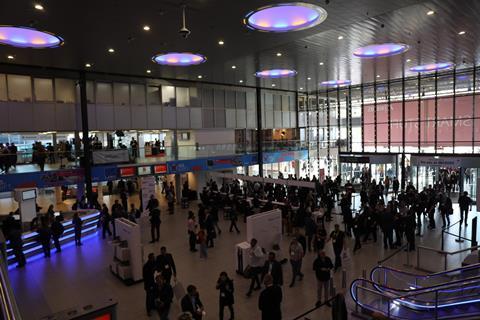Responding to the myriad of complex digital transformation challenges facing today’s Media & Entertainment industry, IBC has introduced the Accelerator Media Innovation Programme. Ian Volans looks at these projects.

The IBC Accelerators are fast track, multi-company projects that address complex M&E business and technology challenges. Bringing together broadcasters, studios and content owners as ‘Champions’ working with vendor and solution provider ‘Participants’, Accelerators aim to deliver proof-of-concept solutions that demonstrate real business value from focused five-month projects.
Over the next few weeks IBC365 will take a look at the challenges that will be showcased at IBC2020.
Accelerator title Television Delivered as Objects
Champions ITV (Project lead), BBC, Unity Technologies, YLE
Participants Dazzl, Grass Valley, Singular.live, Eluv.io,
TV channels and services are traditionally assembled from components centrally and then pushed to consumers using broadcast methods. Today some components can be modified downstream, using replacement technologies to switch out one video segment for a more targeted alternative. This Accelerator will investigate the extent to which emerging and decentralised technologies can be used to extend this concept to other components such as graphics and audio.
Tim Davis, principle architect at ITV, outlined what the UK broadcaster - and this Accelerator’s lead Champion - hopes to achieve. “Our main aim is to start to shape what a future TV service looks like. Right now, we have linear services and on demand services, that each have very different attributes – hardware vs cloud; shared vs personalised, centralised vs distributed and so on. The Accelerator will help us work out how we can take the best of both worlds and merge them to help shape future services.”
Staying true to the belief that the television in the living room remains the primary screen from a broadcaster’s perspective, Davis says that connected TVs will be the best proving ground for any new concepts. “They generally have less processing power than smartphones, tablets and PCs and so are a good benchmark as to what can be achieved across a wider range of devices.”
This is because the connected TV eco-system tends to be more fragmented than the mobile space dominated by iOS and Android, or the home computer environment in which Chrome or Safari can cover 70 percent of the user base.
Davis believes the Accelerator will help better understand the pros and cons of rendering on device or back in the cloud. The team will also explore the potential of tools like Unity, from the gaming world, for rendering animated and virtualised content. Unity Technologies has joined the Accelerator as a co-Champion: its Tiny Unity can be embedded in clients to facilitate rendering on device. Davis is interested to see how it might work on the connected TV where capabilities are much more variable.
The group also wants to confine itself to understanding what is possible with the current capabilities of broadband networks rather than suggest solutions that would be beyond their ability to make a reality.
Having looked at the capabilities that each champion and participant brings to the table and mapped them to a few use cases, the next steps are to start trialling functionality that is already available, working out what still needs to be built and then seeing where the gaps are.
Across the value chain
The participants involved bring experience from different parts of the content value chain.
Dazzl offers a wide range of cloud-based multiple-input virtual studio, live and remote production tools. The French company’s cloud dashboard enables the capture of videos from multiple smartphones, professional cameras and encoders and the addition of effects before streaming to websites and social media platforms.
Thierry Scozzesi, Dazzl’s CEO & co-founder, sees the Accelerator as a great opportunity for his start-up to validate advanced concepts while learning about the requirements of content creators in a way that would be possible in a normal client-supplier relationship. He sees the agility that Dazzle offers in live content creation as not-only an asset for the proof-of-concept collaboration, but also a basic building block for multiplying content in order to be able to deliver personalized viewing experiences.
- Read more: The Catalyst of media/telco innovation
Singlular.live, whose founders came from Vizrt and Reality Check Systems, are contributing insights accumulated during the development of its cloud-native graphics overlay platform.
As a relatively new and small company, Singular sees the Accelerator as a great opportunity to work directly with industry leaders, take on board their needs and help shape its own development roadmap. Mike Ward, Singular’s head of marketing says that the company was born to serve the need for new ways of creating content that harnesses modern technologies to deliver more personal, engaging and interactive viewing experiences. He observes that “The impact of Covid-19 is forcing people to experiment with new technologies that enable remote and cloud productions. We have seen a massive surge in use and interest.”

With its lightweight cloud rendering engine, Singular enables client-side on-device rendering of overlay graphics. This combined with cloud-based scalability enables content to be localised, regionalised and even personalised. Graphics can also be made to be device sensitive, being presented in different formats depending on whether the viewer is on a phone, tablet, desktop or smart TV. In the age of Quibi, Singular can also adjust graphics for users viewing in portrait or landscape mode. Ward notes that rendering graphics on device also opens up interactivity options such as voting, polling, betting, shopping or delivering supplementary information. Device side rendering can even enable viewers to choose the language they want their graphics to be displayed in.
Grass Valley has been involved in a similar proof-of-concept development project in the past. Karl Mehring, senior director of product management said the initiative “proved that by starting small and focussing on getting an initial concept going in a focussed team from different companies, you can really achieve impressive results in a short period of time.”
The company is contributing its wealth of experience in playout and the distribution of media over a proliferation of platforms. The company has worked with a number of broadcasters to provide triggers to achieve content manipulation down-stream and has recently made significant investment into the OTT space as viewing trends migrate to online. “The desire to make consumed media as personalized as possible is of real interest across M&E,” says Mehring.
While the initial champions and participants have wide-ranging expertise, Davis has recognised that additional insight in front end player environments could be a useful addition to help build a good demonstration environment.



























No comments yet